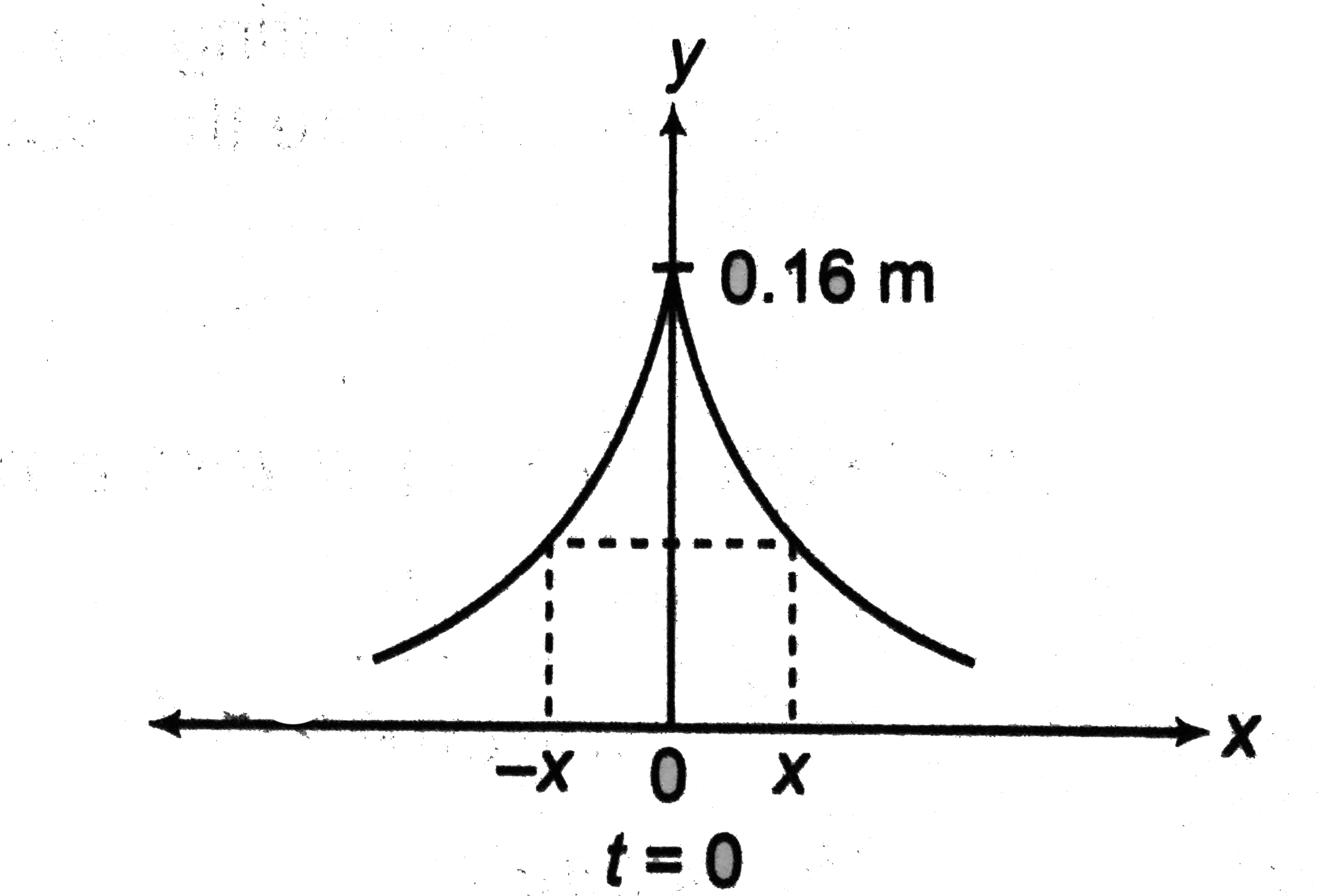x(x,t)=0.8[(4x+5t)2+5], represents a moving pulse where x and y are in metre and t is in second. Find
(i) The direction of wave propagation.
(ii) The wave speed.
(iii) The maximum displacement from the mean position (i.e., the aplitude of the wave).
(iv). Whether the wave pulse is symmetric or not.
To solve the given problem, we will analyze the function f(x,t)=0.8(4x+5t)2+5 step by step.
Step 1: Determine the direction of wave propagation
The general form of a wave function can be expressed as f(x,t)=A⋅g(kx−ωt) or f(x,t)=A⋅g(kx+ωt). Here, g is some function, A is the amplitude, k is the wave number, and ω is the angular frequency.
In our case, we can identify the argument of the function as 4x+5t. The coefficient of x is positive (4), and the coefficient of t is also positive (5). This indicates that the wave is propagating in the negative x-direction.
Direction of wave propagation: Negative x-axis.
Step 2: Calculate the wave speed
The wave speed v can be calculated using the formula:
v=Coefficient of tCoefficient of x=ba
Where b is the coefficient of t (which is 5) and a is the coefficient of x (which is 4).
v=54m/s=1.25m/s
Wave speed: 1.25 m/s.
Step 3: Find the maximum displacement (amplitude)
The maximum displacement (amplitude) occurs when the denominator of the function is minimized. The denominator is minimized when (4x+5t)2 is minimized, which occurs when 4x+5t=0.
Substituting 4x+5t=0 into the function gives:
f(x,t)=0.80+5=0.85=0.16m
Maximum displacement (amplitude): 0.16 m.
Step 4: Determine if the wave pulse is symmetric
To check for symmetry, we can evaluate the function at t=0:
f(x,0)=0.8(4x)2+5=0.816x2+5
The function f(x,0) is symmetric about x=0 because f(x,0)=f(−x,0). This indicates that the graph of the function is symmetric.
Wave pulse is symmetric.
Summary of Answers:
(i) Direction of wave propagation: Negative x-axis.
(ii) Wave speed: 1.25 m/s.
(iii) Maximum displacement (amplitude): 0.16 m.
(iv) The wave pulse is symmetric.
The general form of a wave function can be expressed as f(x,t)=A⋅g(kx−ωt) or f(x,t)=A⋅g(kx+ωt). Here, g is some function, A is the amplitude, k is the wave number, and ω is the angular frequency.
The wave speed v can be calculated using the formula:
The maximum displacement (amplitude) occurs when the denominator of the function is minimized. The denominator is minimized when (4x+5t)2 is minimized, which occurs when 4x+5t=0.
To check for symmetry, we can evaluate the function at t=0:
(i) Direction of wave propagation: Negative x-axis.
(ii) Wave speed: 1.25 m/s.
(iii) Maximum displacement (amplitude): 0.16 m.
(iv) The wave pulse is symmetric.
Topper's Solved these Questions
- BOOK - AAKASH INSTITUTE ENGLISHCHAPTER - WAVESEXERCISE - Try Yourself65videos
WAVES
- BOOK - AAKASH INSTITUTE ENGLISHCHAPTER - WAVESEXERCISE - Assignment (Section-A)55videos
WAVES
- BOOK - AAKASH INSTITUTE ENGLISHCHAPTER - WAVE OPTICSEXERCISE - Assignment (Section-J (Aakash Challengers question))1videos
WAVE OPTICS
- BOOK - AAKASH INSTITUTE ENGLISHCHAPTER - WORK, ENERGY AND POWEREXERCISE - Assignment (SECTION - D)13videos
WORK, ENERGY AND POWER
Similar Questions
y(x,t)=0.8/[4x+5t)2+5] represents a moving pulse, where x and y are in meter and t in second. Then
View SolutionThe wave function of a pulse is given by y= 3(2x+3t)2 where x and y are in metre and t is in second
(i) Identify the direction of propagation.
(ii) Determine the wave velocity of the pulse.View Solutiony(x,t)=0.8[(4x+5t)2+5] represents a moving pulse where x and y are in metre and t in second. Then,choose the correct alternative(s):
(a) pules is moving in positive x- direction
(b) in 2s it will travel a distance of 2.5m
(c) its maximum displacement is 0.16m
(d) it is a sysmmetric pulse
 View Solution
View SolutionThe wave function of a pulse is given by y=5(4x+6t)2 where x and y are in metre and t is in second :-
(i) Identify the direction of propagation
(ii) Determine the wave velocity of the pulseView SolutionA wave is represented by x=4cos(8t−y2) , wher x and y are in metre and t in second. The frenqency of the wave (ins−1) is
View SolutionThe equation of a wave is given by
y=asin(100t−x10) where x and y are in metre an t in second, the velocity of wave isView SolutionA travelling wave pulse is given by
y=43x2+48t2+24xt+2
where x and y are in metre and t is in second. The velocity of wave is :-View SolutionA wave front is represented by the plane y=5−x Find the direction of propagation of wave.
View SolutionA standing wave is represented by, y−Asin(100t)cos(0.01x), where x,y and A are in millimeter and t in second. The velocity of the wave is
View SolutionThe equation of a moving progressive wave is given by y=1x2−4xt+4t2+8, where x and y are in metre and t is in second . Hence speed and direction of propagation of pulse is
View Solution

